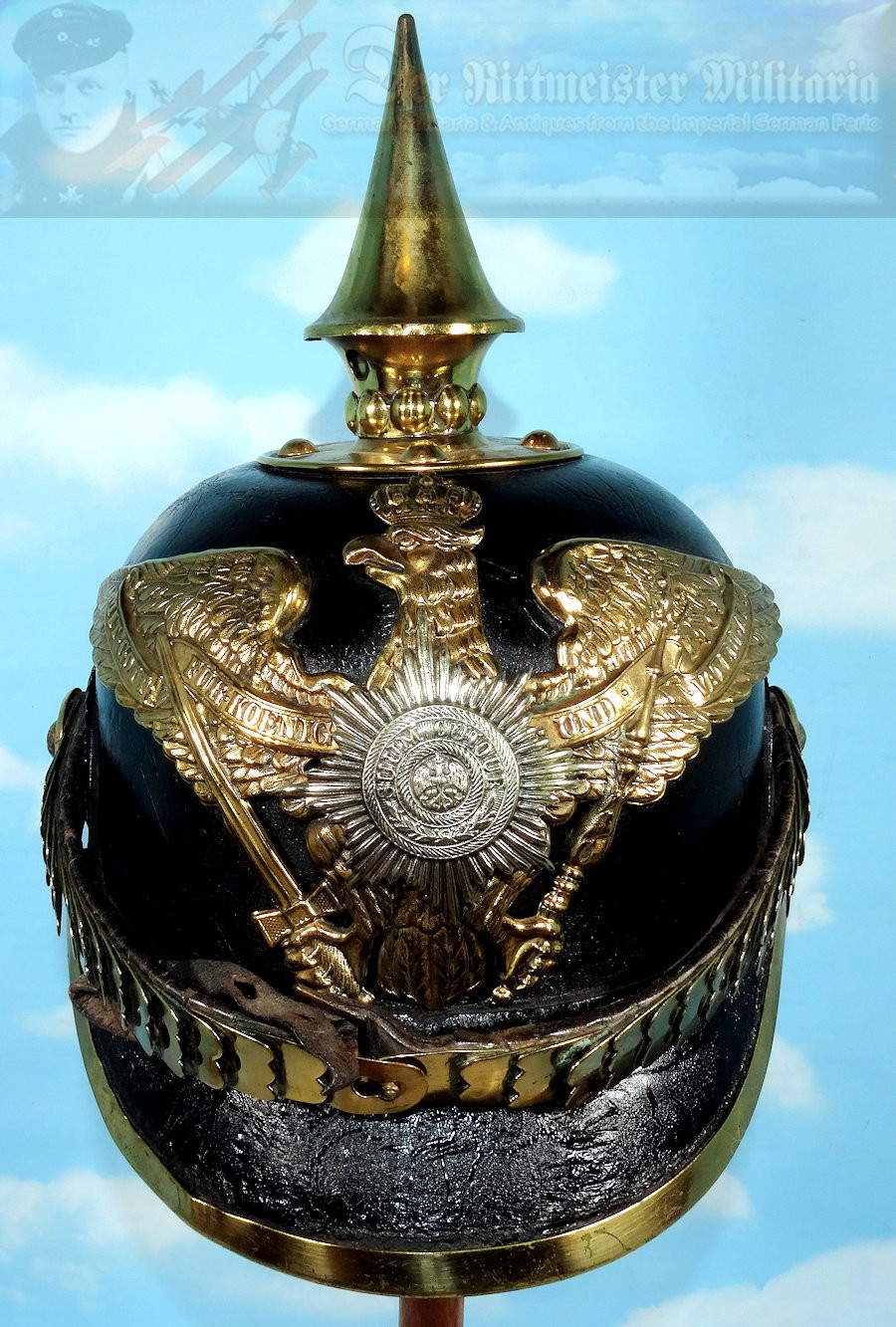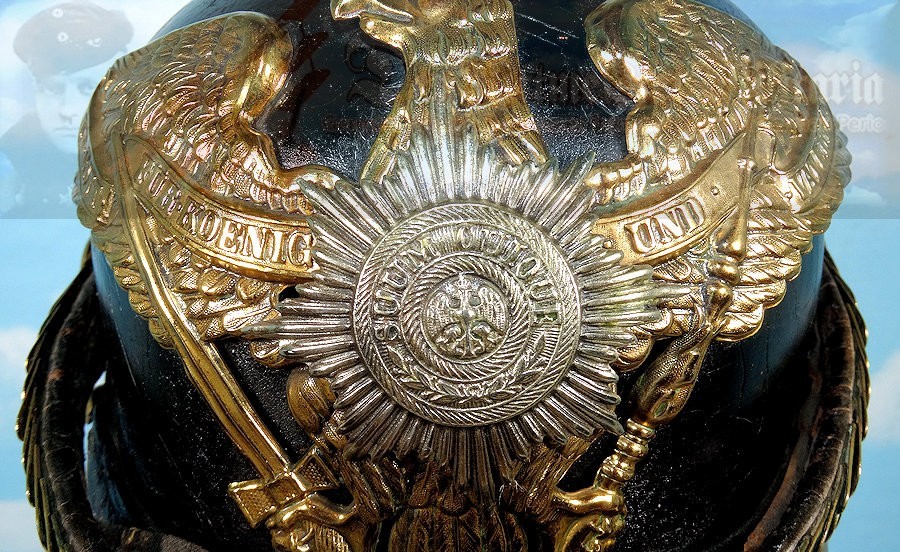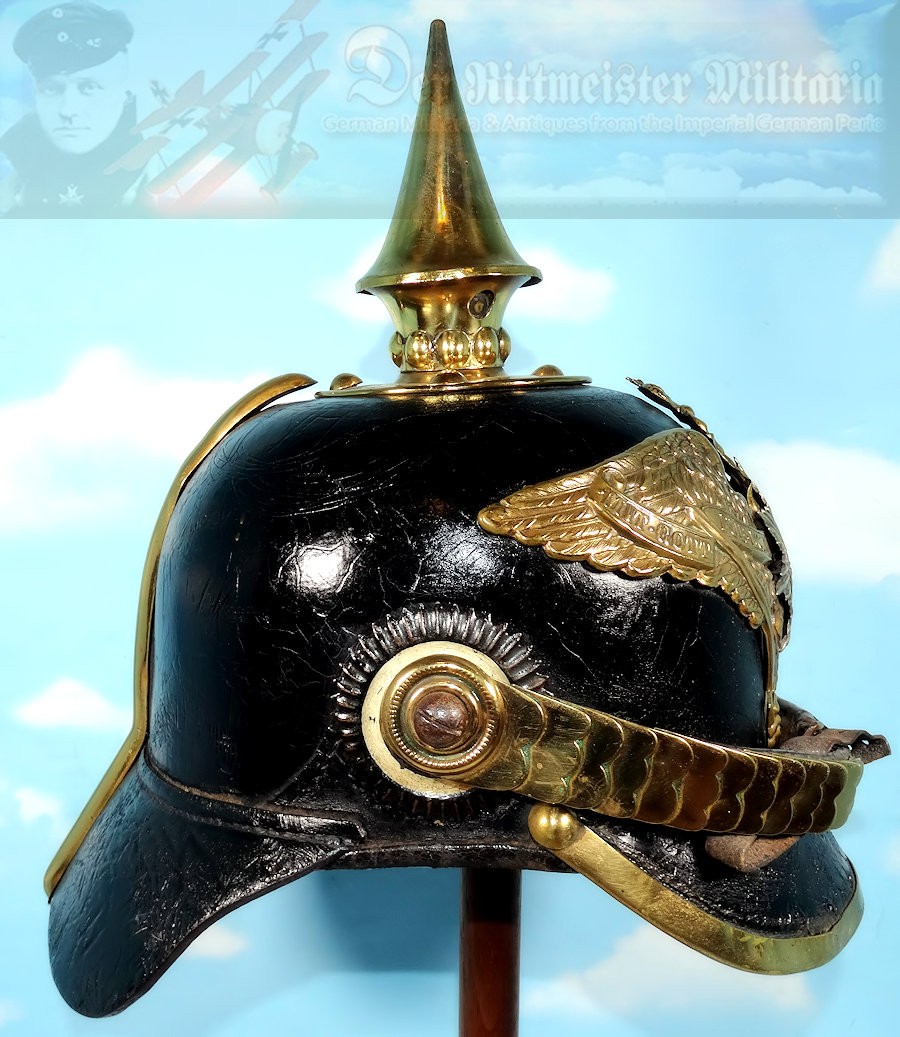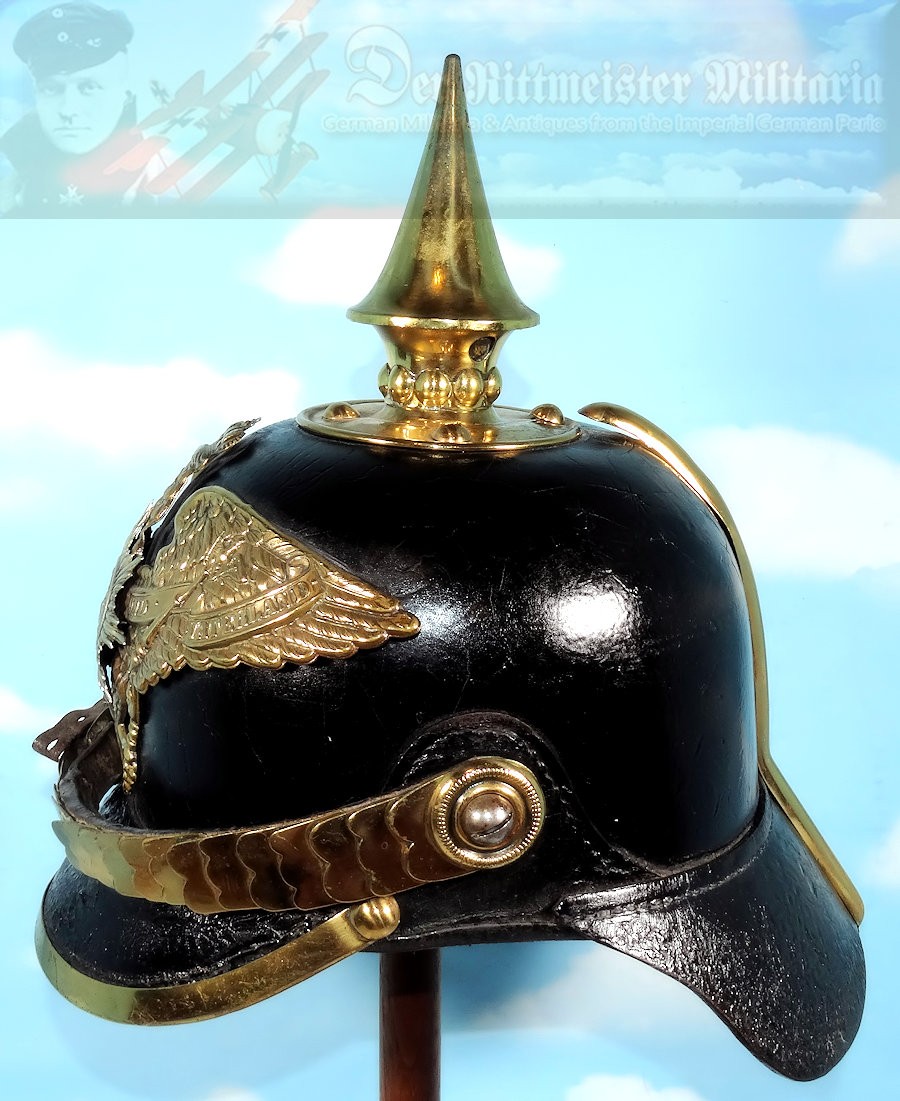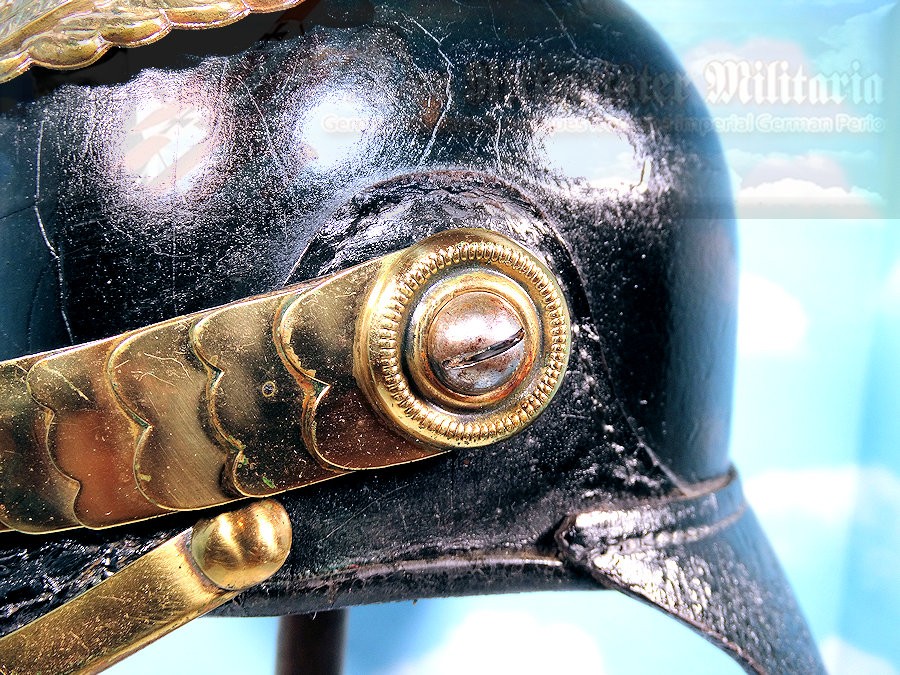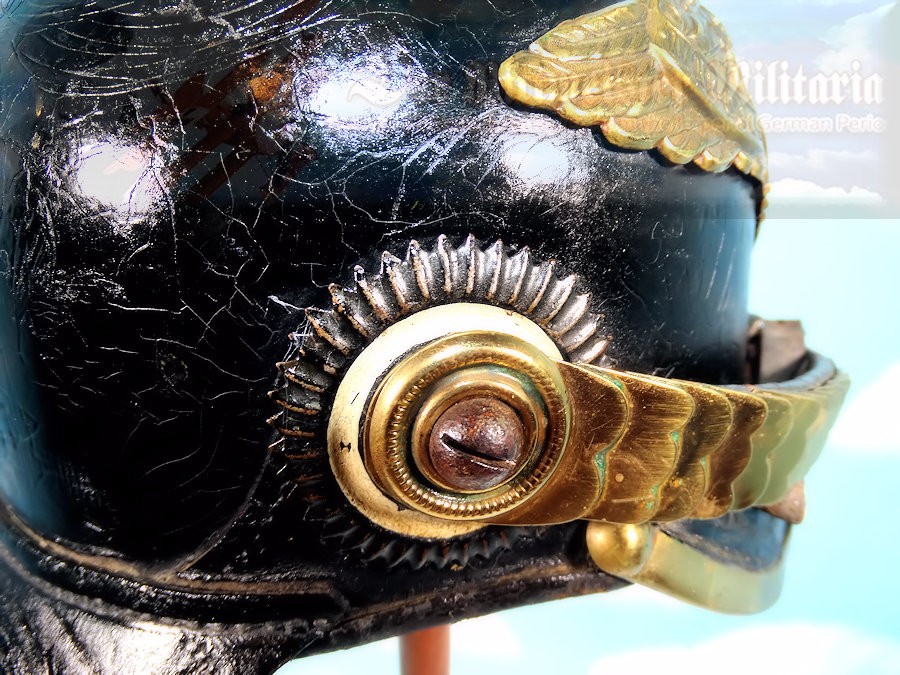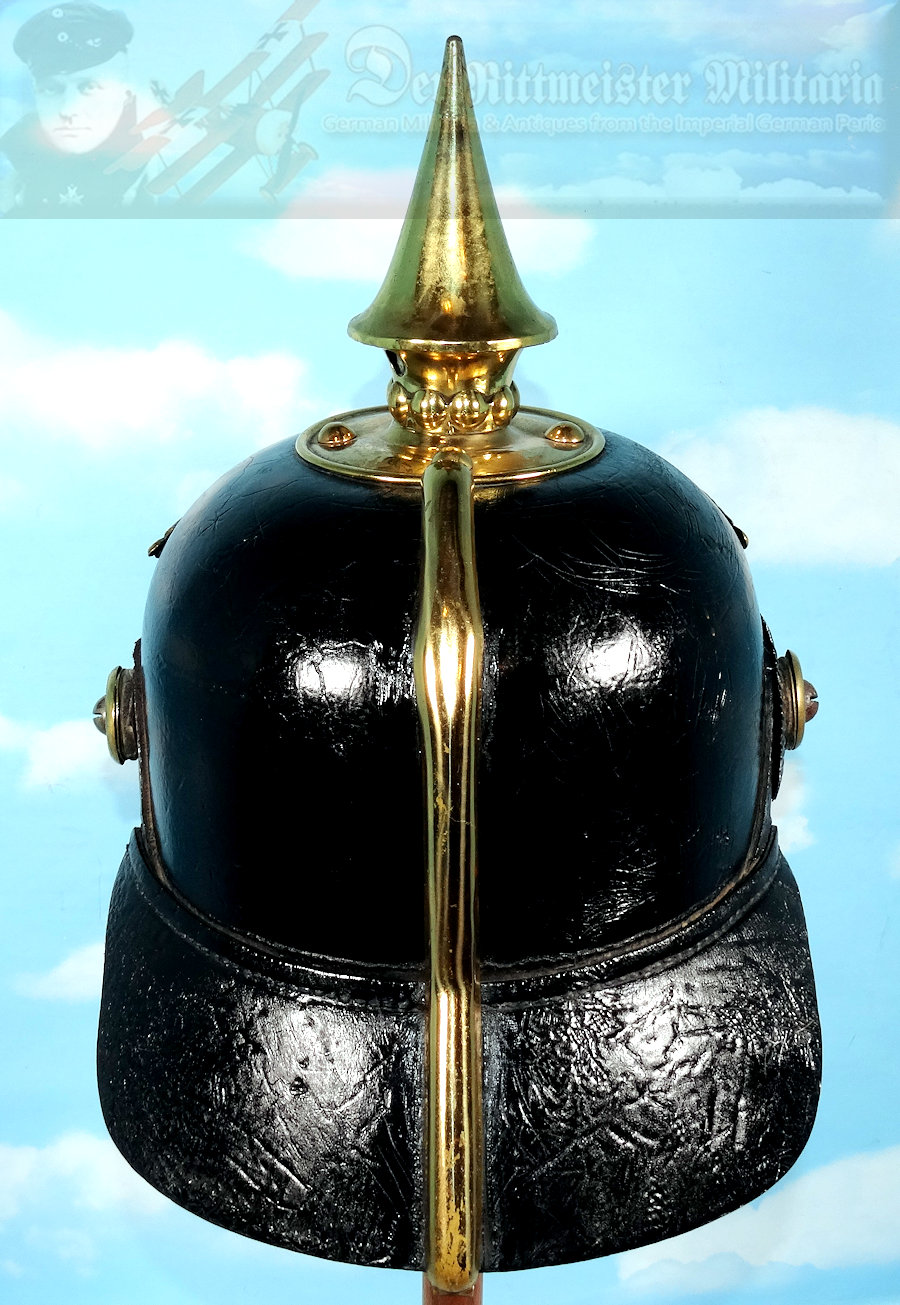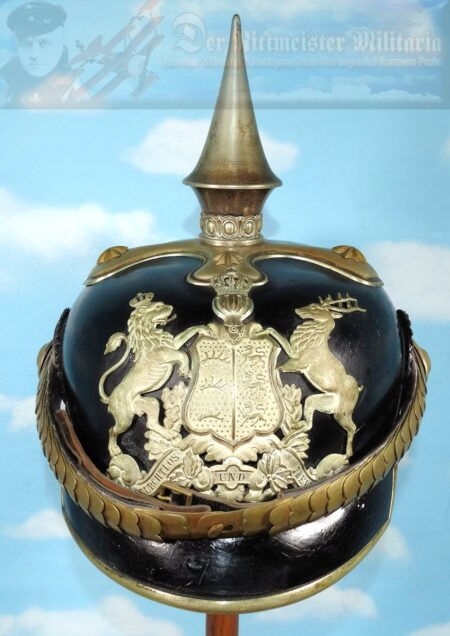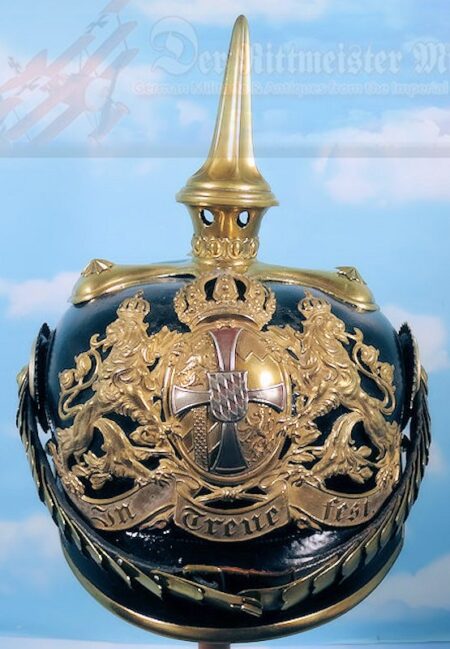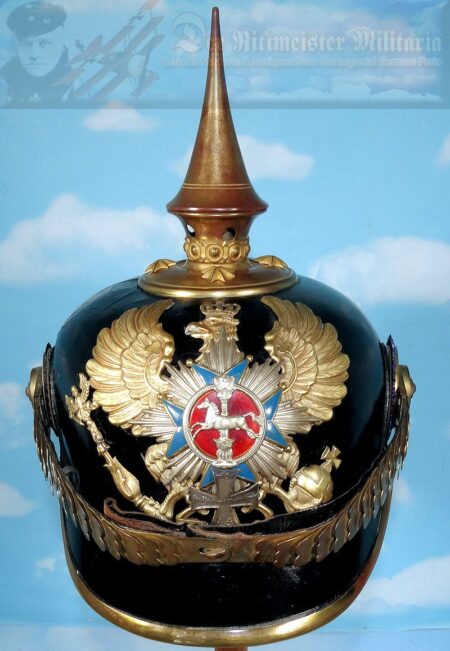Description
PRUSSIA – PICKELHAUBE – ENLISTED MAN/NCO – M1871 – 2. GARDE-REGIMENT zu FUß
In 1842, Prussia introduced a spiked helmet that was initially used by both Infanterie and Artillerie regiments. The Artillerie switched to a kugel (ball) on the top of their helmets. It remained this way as long as the Prussian Army used pickelhauben and kugelhelme. Over the next forty years, other German states phased in the pickelhaube. Bavaria was the last to do so, in 1886. Early pickelhauben share many of the same features we find in the M-1897 helmets. Over the years, however, a number of refinements were made. In particular, the helmets’ heights were reduced until the final evolution in 1891/1897.
Today we are offering an enlisted men/NCO’s M-1871 pickelhaube from 2. Garde-Regiment zu Fuß. This was a very elite regiment. It was founded in 1813 and garrisoned in Berlin. (All Garde-Regiments were stationed in the Berlin area, with many located in Potsdam, which today is a Berlin suburb). Like all Garde-Regiments, it was assigned to the Gardekorps. The helmet’s leather body is in good condition. It does not show the cracking and dryness that can come in one-hundred-plus-year-old leather. It does reveal some shrinkage on the front and rear visors, which is quite common even in later helmets. The helmet is still a lot taller then an M-1897, but not nearly as tall as the original M-1842. Its front and rear visors are longer than later models. All of the helmet’s furniture is gilt, with the exception of a silver Garde Star. The helmet has a lovely set of chin scales. They are flat and made of fine brass. The wappen’s eagle is also attractively struck. The helmet’s spike unscrews. It is consistent in height with other earlier pickelhauben.
During this era only a single state’s kokarde (in this case, Prussia’s) was worn on pickelhauben. Reich’s kokarden were not officially used until after 1897. The state’s kokarde is seen on the helmet’s right side, where the Reich’s kokarde later appeared. After 1897, the state’s kokarde was switched to the helmet’s left side. Inside, we find a normal enlisted men/NCO’s leather liner. All of the tongues are present, but the sizing cord is not. The wappen is secured with screws and nuts (no double holes show where the wappen has been installed). A nut secures the helmet’s back trim. The screw and washer are present, but the nut is not. Inside the front visor on the brass trim is stamped “G. Scholz Nachf.” It is a very attractive helmet in fine condition, even after 130+ years.
The spiked helmet comes from a longtime German collector. It was previously owned for 30+ years.
